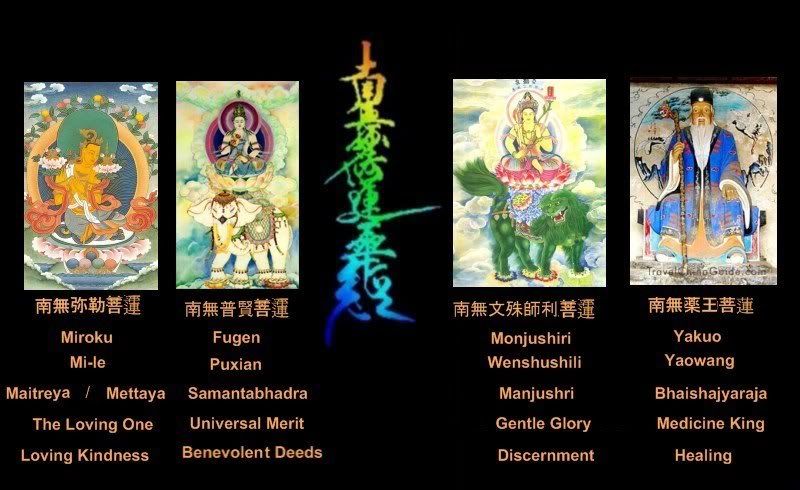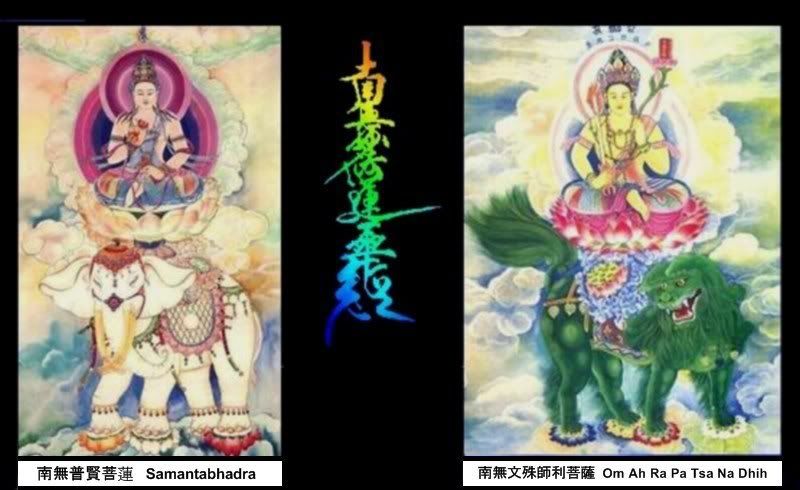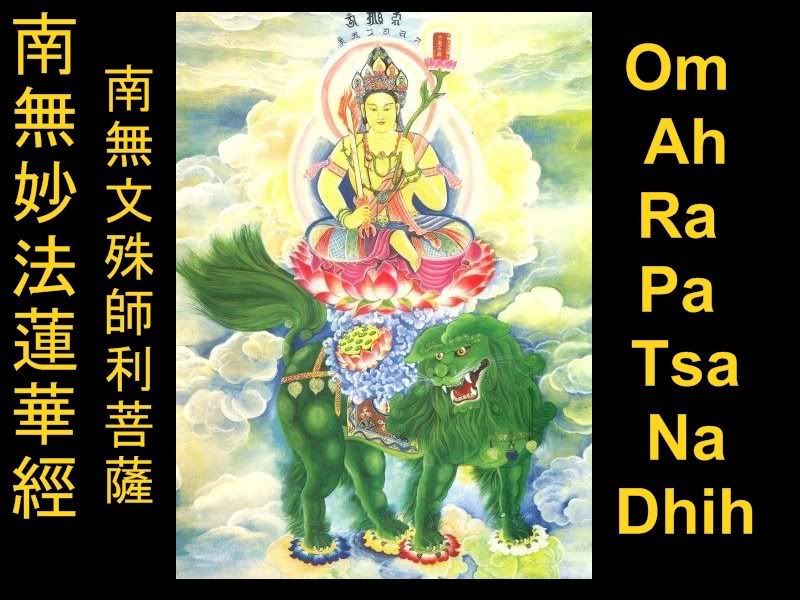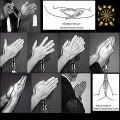Together with Samantabhadra {Fugen}, Monju is said to have attended the Historical Buddha Shakyamuni. They are often paired opposite each other on mandalas or in statuary configurations, flanking Shakyamuni. On most of Nichiren's very formal Ten Worlds Great Mandala Gohonzons; Monju and Fugen are on opposite sides of the central Daimoku, they occupy the inner most positions in the second row from the top. Namu Monju Shiri Bosatsu [南無文殊師利菩薩] is positioned directly below Namu Taho Nyorai [南無多宝如来] on the left of the mandala, which is your right.
That will work for copies the Shutei Honzon, the Denpo Honzon, and the Kito Honzon; as well as the Nittatsu & Nikken Transciptions issued by Taisekiji. Note that the Trace Gate Bodhisattvas are omitted in the SGI Nichikan Gohonzon; you will not find them there. The Mannen Kugo Daihonzon of 1274 is configured quite a bit differently, but you will find Monju in about the same position, except that Fugen is on the same {left, right facing} side, to Monju's left {your right}. On the Ichinen Sanzen Honzon; iirc, Nan {南} Mu {無} Monju {文殊} Fugen {普賢} Bosastsu {菩薩} is the third entry on your left, facing, reading right to left.
The Manjushri mantra is said to enhance explaining, debating, writing, critical thinking, memory, and so on. According to Wildmind: "Manjushri is associated with ordinary intelligence and mental accuity as well as transcendent Wisdom, and his mantra Om A Ra Pa Ca Na Dhih is said to confer intelligence. Shantideva, the author of the great Bodhicaryavatara ("Guide to the Bodhisattva’s Way of Life") is said to have gained his wisdom by communing with Manjushri by night, while appearing by day as a slovenly and lazy scholar-monk."








